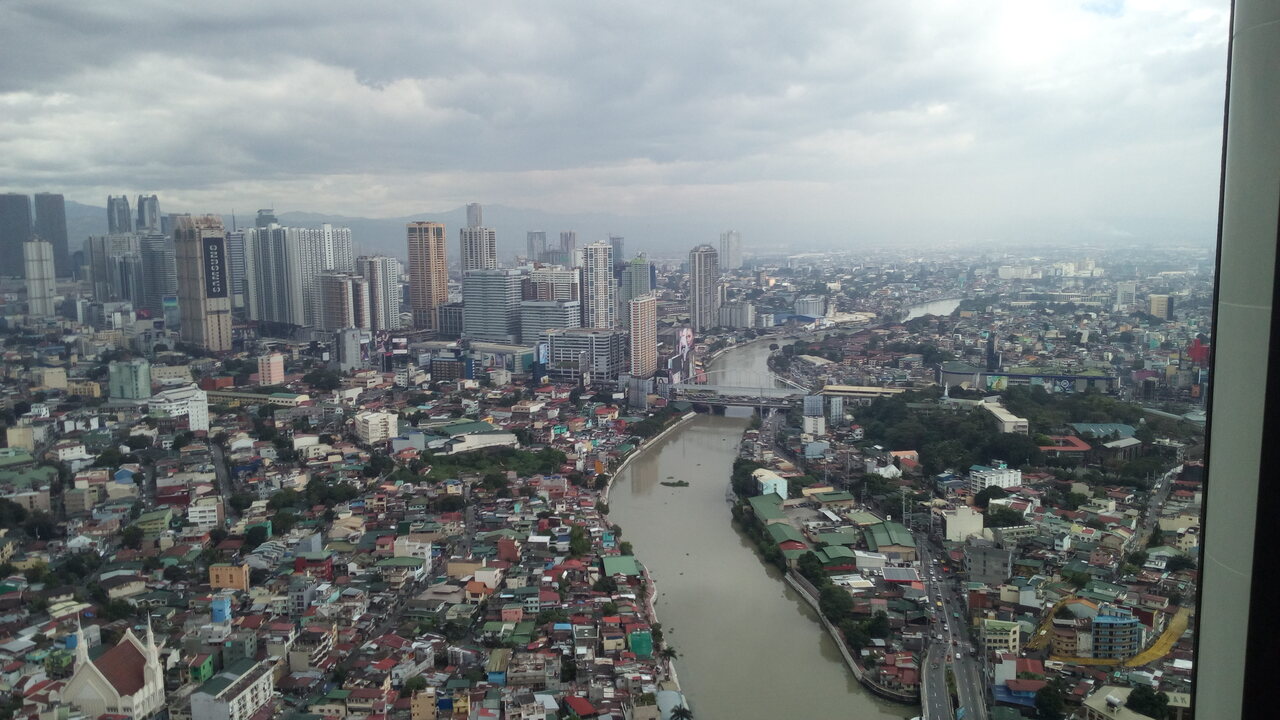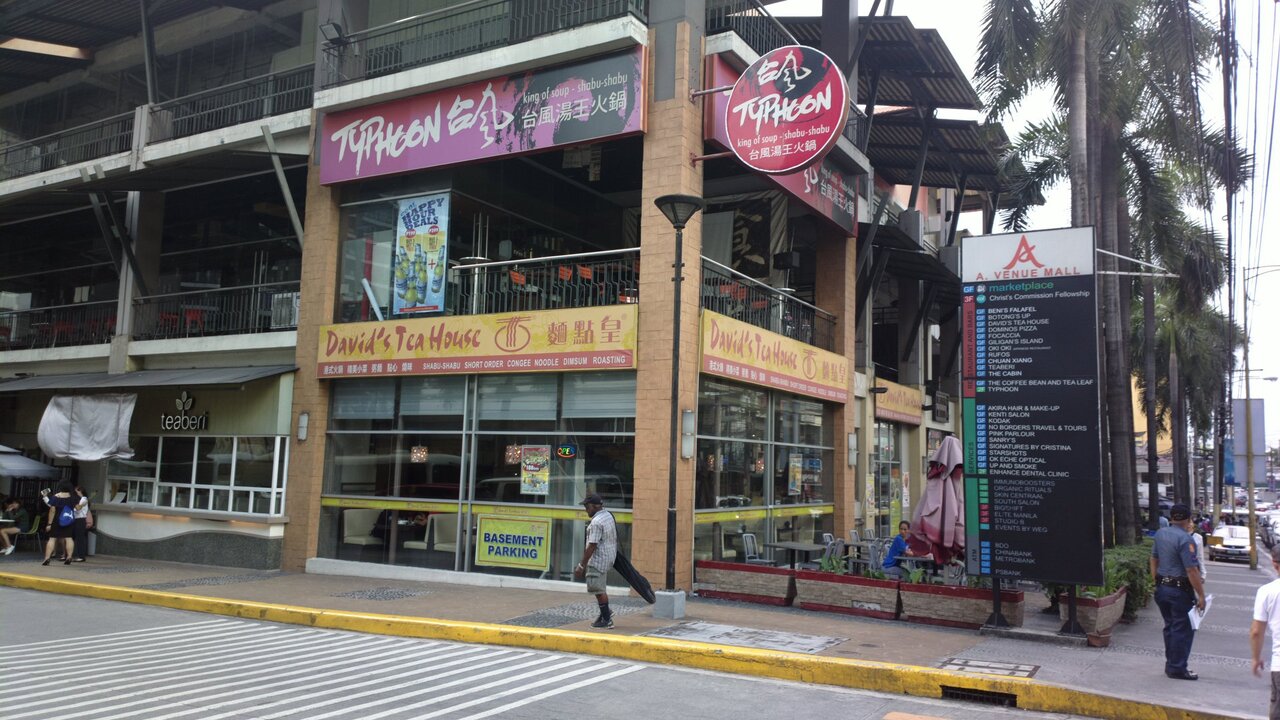
Metro Manila: On Tour with Social Murder
The Philippines’ National Capital Region, known colloquially as Metro Manila, is not only the scene where Social Murder takes place, it’s also one of the “stars of the show”. It’s a massive area, home to about 14.7 million people in 2023, more than ten percent of the national population.
Metro Manila comprises of the city of Manila itself, plus fifteen other urbanised cities, the action in Social Murder crosses four of those cities, Makati, Mandaluyong, Quezon City and Taguig. If you have lived in the capital region or visited these cities, you will no doubt recognise them, whether you’re local to the area, a foreign resident of the metropolis or a tourist or business traveller – these are the parts of the capital where the widest variety of people can be found; a real melting-pot like those you expect to find in many a nation’s capital. In this blog post, we’ll visit some of those places.
Jazz Residences – Makati City
Makati City is Metro Manila’s financial and commercial centre and, until very recently, the sight of the Makati Stock Exchange Building. Jazz Residences is where Ronni Wong is staying during her time in Metro Manila, one of a great many high-rise, exclusive housing developments that have grown up in clumps around the metro area, and typical of the ilk. Residents have large, open-air pools in which to enjoy the steamy Makati climate and a small shopping mall featuring a major supermarket chain – the idea of these combined commercial/residential complexes is to provide a complete living experience.
In the opening scenes of Social Murder, Ronni Wong is leaving her condo in the complex and walking out into the busy city below; and being her home, the story returns to the complex frequently.
MRT3 (Metro Rail Transit)
The MRT3 is a monorail line that runs from North Avenue in Quezon City, to Taft Avenue in Pasay City, following the route of the EDSA (Epifanio de los Santos Avenue) eight-lane orbital express route used by hundreds of thousands of motorists every day. It is a far quicker way of getting north to south and vice-versa than being in any of the cars, jeepneys or buses on the road below.
Ayala Triangle Gardens
The Triangle is a park in the heart of Makati, surrounded by Makati Ave, Ayala Avenue and Paseo de Roxas which make the triangle shape from which the area takes its name. It’s popular with hundreds if not thousands of people who work in the myriad of surrounding office buildings, with its row of cafés, restaurants and convenience stores offering refreshments to the huge numbers of people that visit the park each day. Ronni arranges an important meeting in the park in Chapter Three in the hunt for clues.
The Ayala Triangle is also home to a large community of semi-feral cats, leading an opportunistic life amongst the two-legged patrons of the park. When I worked in the area myself, and visited the park most lunchtimes for a break in the open air, there were two cats particularly that became firm friends – they would always be around, especially if I decided to have an ice cream from the Mini Stop convenience store. One was a brown tabby that I called Gremlin for her mischievousness, and the other a tortoiseshell that I knew as Mogwai, a gentler but just as inquisitive as her ‘sister’ and with an equally rapacious appetite for ice cream. Mogwai earned such a place in my heart that she gets a mention in Social Murder, albeit not by name – watch out for her when you read the story!
Araneta Center, Cubao
Cubao is part of Quezon City, and Ortigas – a large business area straddling the borders of Quezon City, Mandaluyong and Pasig. Just like Makati, it has numerous shopping centre and department store complexes surrounded by exclusive housing developments. The Araneta Center is one such mall, with several others nestled in the area around it. As Ronni follows the last known movements of her friend, Jenny, she finds herself in the Coffee Bean and Tea Leaf café outside the Araneta Center, and then at a pizza parlour around the corner.
Silangan, Cubao
Sinangan is a residential area just north of the Araneta Center, and is one of many places where the sharp contrasts of Metro Manila are unmistakeable. At many places in Metro Manila, you can be surrounded by modern, high-rise complexes one minute, and a couple of hundred metres down the road you are in a Filipino neighbourhood full of houses built entirely from concrete hollow-blocks of the type that the inner layer of a modern, European cavity-wall constructions use, often with nothing more than sheets of corrugated metal for their roofs. This neighbourhood is where Jenny’s family live.
So-Go Hotel, Makati MRT
So-Go is a chain of budget hotels with locations throughout the metropolis. You can spot them easily as your travel around Metro Manila, their red exteriors with yellow stripes. Customers can rent rooms by the week, day or even in spans of three hours. In a country where many younger adults continue to live with their families until and even beyond getting married because the cost of accommodation is so high for ordinary Filipinos in Metro Manila, sometimes these are a haven for young coupled needing a little privacy. In chapter four of Social Murder, Ronni finds herself in danger at one such hotel near the Guadalupe MRT station.
A-Venue, Makati
A-Venue was a magnificently unique building in the Poblacion barangay* of Makati City, designed in the 1970s by Leandro V. Locsin, one of the Philippines’ leading architects. It featured a supermarket, a number of cafés and restaurants, shops, bars, beauty salons and a night club – all still going strong in 2017 when Social Murder was written and when the action in the story takes place. It was closed down by the end of 2019, with the intention of being demolished for new development to take place. As late as September 2022, The National Commission for Culture and the Arts won a court order preventing the demolition of this historic building, but less than a year later, Google Street View will show you that A-Venue is no more.
In Chapter Four, Ronni meets her latest new friend at A-Venue for dinner, in a wonderful Chinese restaurant that thankfully still survives, albeit elsewhere in Makati. I certainly look forward to eating there again.
Pateros-Taguig border
Although deep in the heart of the Metro Manila area, the small town of Pateros is a very Filipino neighbourhood, off the tourist track and usually unseen

Post Views : 489